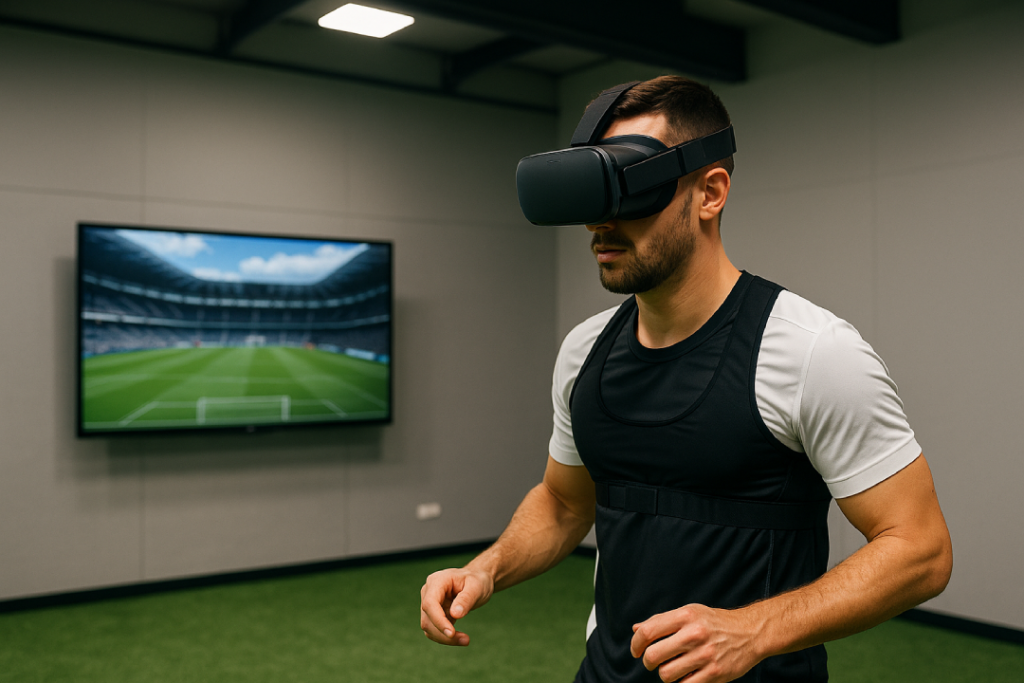
What if players could replay their mistakes from training in first-person view—before stepping back onto the pitch? Welcome to the world of Virtual Reality (VR) in football. This once sci-fi tool is now quietly transforming the way players learn, train, and visualize success.
Seeing the Game Differently
VR puts players in the heart of the action—literally. With a headset on, a midfielder can relive a specific moment: what space was available, where the defenders moved, and which passing options were best. It’s no longer theory—it’s re-experience.
When I first tried a VR session in a training lab in Amsterdam, I was stunned. You could rewind a defensive lapse and walk yourself through it again and again—without moving a muscle.
Accelerating Tactical Awareness
One of VR’s biggest benefits? It speeds up learning. Instead of watching a flat video, players get immersive sessions that simulate game pressure. This trains decision-making, awareness, and reaction speed without physical fatigue.
Coaches can load specific scenarios: defending a corner, dealing with a press, or making split-second choices in tight spaces. It’s a controlled environment where mistakes become lessons, fast.
Helping Injured Players Stay in Shape Mentally
Injured athletes often struggle with feeling disconnected. But with VR, they can stay mentally sharp—reviewing tactics, studying match scenarios, and keeping their “football brain” active while recovering.
This kind of tool bridges the gap between physical and mental training in a way we’ve never had before.
Not Just for the Big Clubs
While clubs like Manchester United or Bayern Munich were early adopters, VR is becoming more accessible. Affordable systems are now used at youth academies and even high schools in Europe and the US.
This democratizes elite training tools. Talent can be nurtured smarter—even without massive budgets.
A Glimpse into Football’s Future
VR isn’t replacing real-life training—but it’s enhancing it in ways that were unthinkable a few years ago. Players can now practice smarter, learn faster, and build stronger instincts.
And as the technology improves, we may soon see every team—professional or amateur—using VR as a standard part of their training toolkit. Football’s future isn’t just on the pitch. It’s also in the headset.